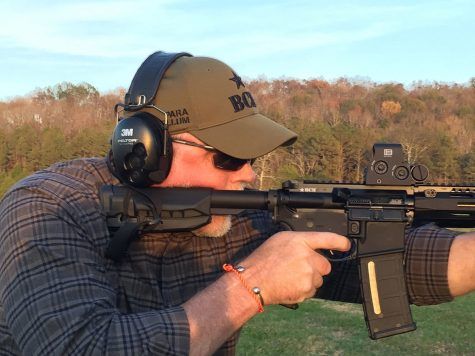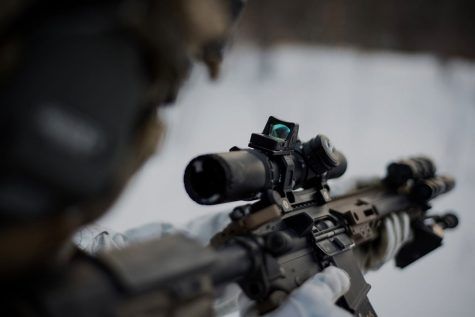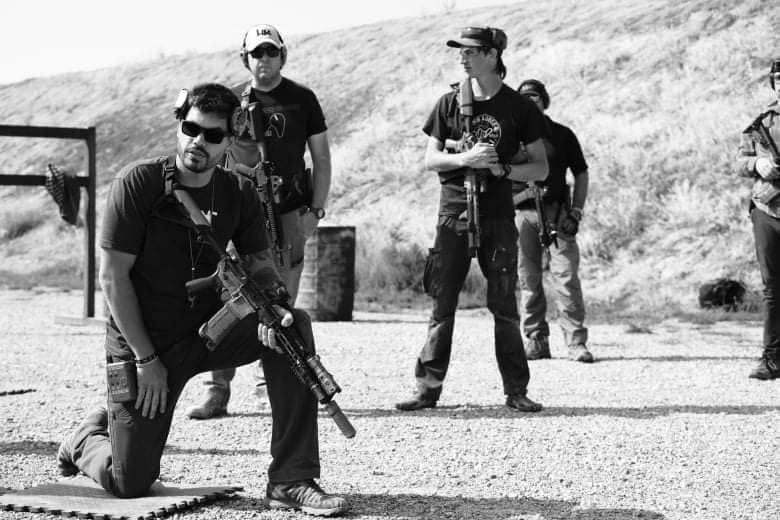
We recently spoke with Mark Smith of JBS Training Group about new courses in 2022 focused on proficiency at a distance, what it takes to be a successful instructor, and how an overemphasis on strict range rules can have an unforeseen negative impact in real-world situations.
Q: Mark, can you give a brief recap of your 2021 and what’s in store for folks in 2022?
Mark Smith – JBS Training Group – 2021 was crazy, and we had a lot of unexpected success. I think we only had to cancel one class all year due to us not getting it full. That’s crazy, being how new the company is, COVID going on, everyone concerned about the ammo situation, etc. But it didn’t seem to impact us that much. So, we ended 2021 strong, and 2022 is off to a great beginning. As far as some recent highlights, we’ve had a sold-out course with Chris Woomer of VEIL Solutions in December, and I’m currently on my way now to JTAC Ranch in Mulberry, Florida, to do a sold-out ‘Performance Out Yonder’ course.
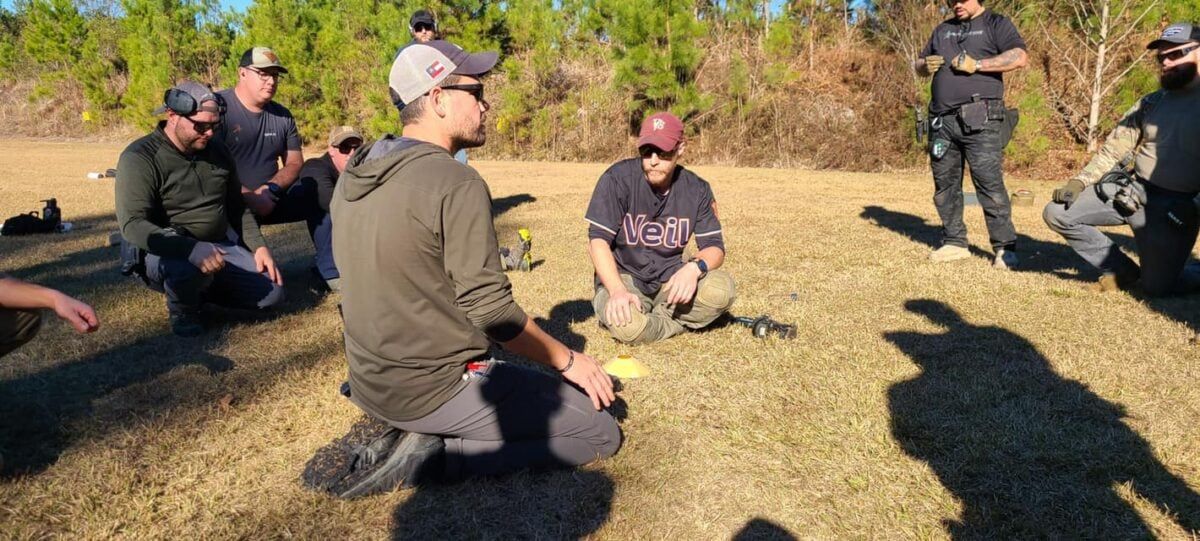
Q: You’ve been at this for a bit now. Are you able to share any do and don’t’ or advice for those who are interested in a career in firearms instruction?
Mark Smith – JBS Training Group – One of the most unrecognized things folks typically don’t consider is that you can take an average shooter and you can take a fantastic shooter, but if a fantastic shooter isn’t good at articulating what is in their mind while the average shooter is an amazing teacher, you are going to get more from the average shooter.
Now that said, if you are going to teach people how to be good at something, you need to be better at that thing than most people. You don’t get a free pass to suck at something and say, ‘oh, well, I can talk good.’ (laughs).
I think that there are so many people that are saturating the industry right now. Every time you flip on a social media outlet, you see someone new teaching some sort of “tactical” training. That’s cool and all as far as capitalism and giving folks options, but the problem comes when you get folks coming to these classes who are already excellent shooters. If you, as an instructor, can’t do better than what they can do, the perception is going to automatically and instinctually be that they don’t have anything they can learn from you. That leads to a lot of people feeling like they wasted their money.
I don’t think you need to necessarily be the ‘best in the world’ as there is always going to be somebody out there that can beat you, but it shouldn’t be half of the class, every class. Ideally, you should be perceived by others as a ‘master’ of your trade. I think you should be able to exemplify that on-demand at any given time. When you can do that, it gains you some respect that you might not otherwise get. Respect is a big thing, and you can gain it by doing things that others struggle to do. You also gain interest. One of the things that intrigues me the most is watching something I would perceive to be impossible until I saw it done. It’s also an inspirational thing.
Q: Since you’ve been training, I know you have some thoughts on conventional firearms training and some potential issues with it regarding safety and bandwidth. Would you mind sharing some of your insights?
Mark Smith – JBS Training Group – There is an issue I really began to notice in 2021, and it tends to be on the professional side of the house, meaning guys who use guns for a living. There tends to be a safety issue when you take men away from the safe environment that they’ve always been in.
Most of the time, in talking with PDs and military, there will be a strict set of bylaws, guidelines, and warning systems to follow to shoot on their range. The reason they do that is simple. Out of the thousand people who come to that range, somebody will not be the smartest guy in the group. He needs someone to take him by the hand and step-by-step create a safe environment for him to learn in. I understand that.
The detriment comes when you’ve always been in safe environments and you have not learned how to be a safe shooter. Safe environments do not breed safe shooters. Safe shooters produce safe environments. And so, the problem is they have created an environment where it is difficult to have a safety violation because everything is managed so well, it’s impossible to have a safety infraction as long as you follow the rules. “Do not go forward of the tape line. Do not break the 180-degree plane. Download the pistol before you go back to the bulkhead,” etc.
It’s almost impossible to have a problem, and the issue with that is that it causes people to switch off. I see many of those guys get into my courses, and I have people operating in what I consider a three-dimensional world – we’re going up, back, side to side, etc. The issue is sometimes those guys just kind of lock up. They don’t know what to do.
There are so many rules being broken from the world that they come from that they are not sure what’s even happening. That’s what I mean when I say that these safe environments breed people to not be able to function as efficiently as they could. They don’t know what to do when the world doesn’t look like it usually does to them.
One of the things I tell my guys all the time is ‘safe shooters over safe environments any ol’ day of the week,’ meaning a safe shooter can be safe in any environment. Whereas someone that has been led by the hand and told not to ever do this, not to ever do that, doesn’t know what to do outside of those walls.
On the bandwidth side, if we can make the foundational firearms safety rules a subconscious thing where I know how to control my muzzle, my trigger finger, the status of my gun, what’s in front, behind, and beside me, that has some big benefits. I can open up bandwidth to do problem-solving instead of being so concerned with ‘where’s that line at that I’m not supposed to go forward of? Where’s my buddy who is supposed to be right beside me no matter what the whole time?’
I feel like some guys shoot more poorly than they are capable of shooting because they are so tied to making sure they are shoulder to shoulder with the man beside them, and they are right at the 20-yard line instead of the 19 ¾ line. Obviously, we are not going to do things that are common-sense unsafe, but being able to move, think, make decisions and put on your big boy pants is a big deal and a growing process.
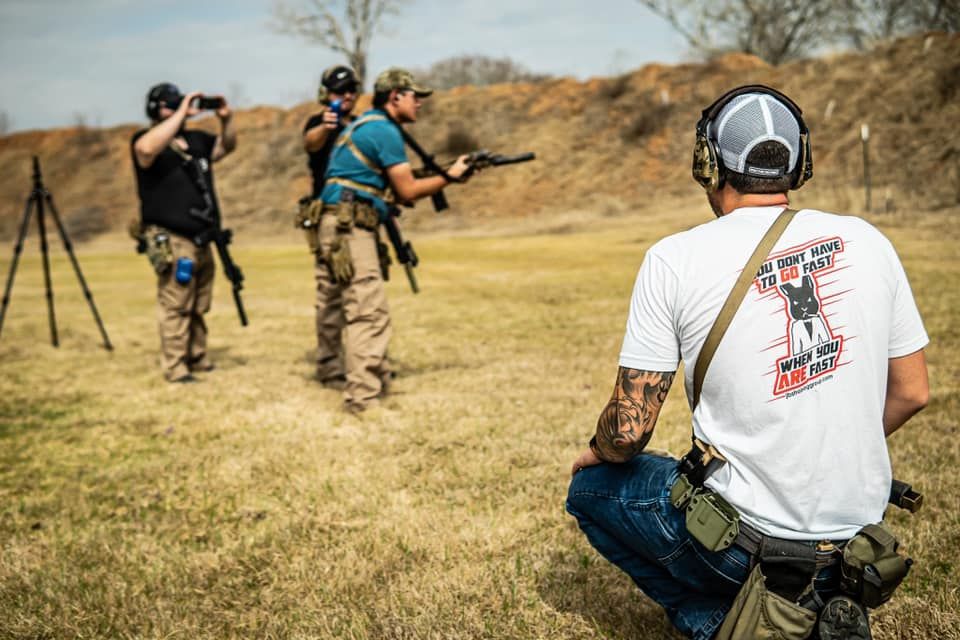
Q: Knowing all of this, how are you trying to address this perceived issue in your courses?
Mark Smith – JBS Training Group – A lot of the lessons that I’ve learned and many of the lessons that I teach are based on competitive shooting, where they sometimes put you in some really weird spots. There are multiple opportunities to make horrible decisions and turn around and point guns at people behind you and things like that.
You have to be actively thinking about how to actively manage this environment in front of you in order to be safe. This could be a USPSA stage or at a two-gun match where you have to go through a house, and some of those corners turn you back towards your mates who are back at the start line. You’ve got to be aware of where people are in time and space, even when you cannot see them.
I try to do things where movement is always happening – forward, backward, lateral, diagonal – and I try to get guys comfortable with the idea of moving with a gun, and moving with a gun in and around others.
That’s what the world is like. You don’t get to pick where the cars are, or where your buddy is. Later in 2022, I’d really like to start doing my best to try to create safe environments by definition – I’m not letting anyone point guns at each other, that’s not what I’m talking about – but an environment where not everything happening is in front of you, and not everyone you are with is beside you….If you do it in the right manner, it can be a totally safe range day, and people will be able to get a lot more out of it, and if nothing else, learn that they need to do more learning, if that makes sense. They need to get more comfortable with the idea that they’ve got their gun out because they’ve done some shooting, now they need to do some moving, so where is the gun in time and space? Where are they, their mates, the backstop, and what is happening around them?
Q: Speaking of movement, for the most basic things, it’s not always something that you need to attend a class for, correct?
Mark Smith – JBS Training Group – Movement is undoubtedly an area where most could use some work, and the biggest thing that people have a misconception about is thinking they need to go and pay someone money to learn to do this. I think some of the biggest gains I’ve ever had in how to move well were in my backyard running ladders, doing cones, and being more in tune with my own body.
Pat McNamera has some great exercises where you can set up cones and learn what it feels like to move efficiently forward, backward, diagonally, and sideways. Learn how your feet work first, then later, you can add the gun. You don’t need to be tremendously athletic to learn how to do. I think many people can gain a lot of ground by practicing some basics and then just by moving more. The upside of that too is, congratulations, now you’re also exercising. (laughs).
Q: Any other plans for the year ahead for yourself?
Mark Smith – JBS Training Group – I love shooting rifle matches. It’s my passion and where my heart is. But, at the same time, I understand the respect and the clientele from the business side of the house that I can reach by gaining Grand Master in Open Division in USPSA.
I’d really, really like to go and do that. Not just because it’s going to bring more people to see me, but because I just really like to push myself to the top of the class. I made Grand Master in Carry Optics last year, and I’ve been thinking about what I’m going to do this year. I have two options – either I am going to dive into the rifle competition world, or I can dive into the Open USPSA world. I could do both, but I don’t think I can be great at both at the same time. (laughs)
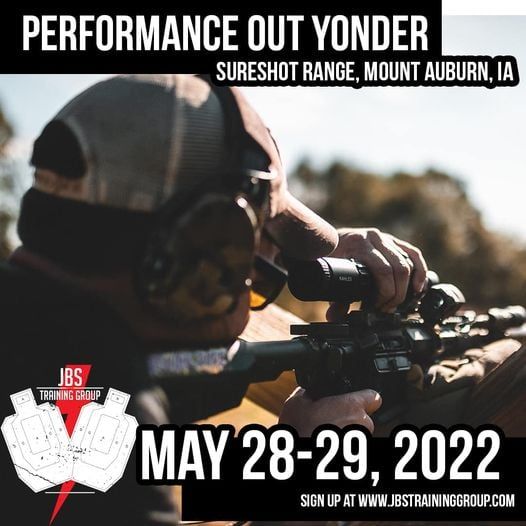
Q: You’re also teaching something now called the ‘Performance Out Yonder’, which you mentioned earlier. Can you talk a bit more about that before we wrap up?
Mark Smith – JBS Training Group – It seems like every time I see dudes shooting on the internet, they seem to be predominately shooting at 25 yards and in. I feel like, for some people, they forget that this is a rifle and it can do ‘rifle’ things. They end up treating their rifle more like a pistol. What I aim to do with the Out Yonder curriculum is create an environment that exposes shooters to what the rifle is truly capable of, as long as you know how to use it. The world kind of changes when you’re shooting out to 200, 300, 400 yards, and the wind is blowing a little bit, and you’re holding the gun sideways underneath a barricade. However, these are real rifle situations.
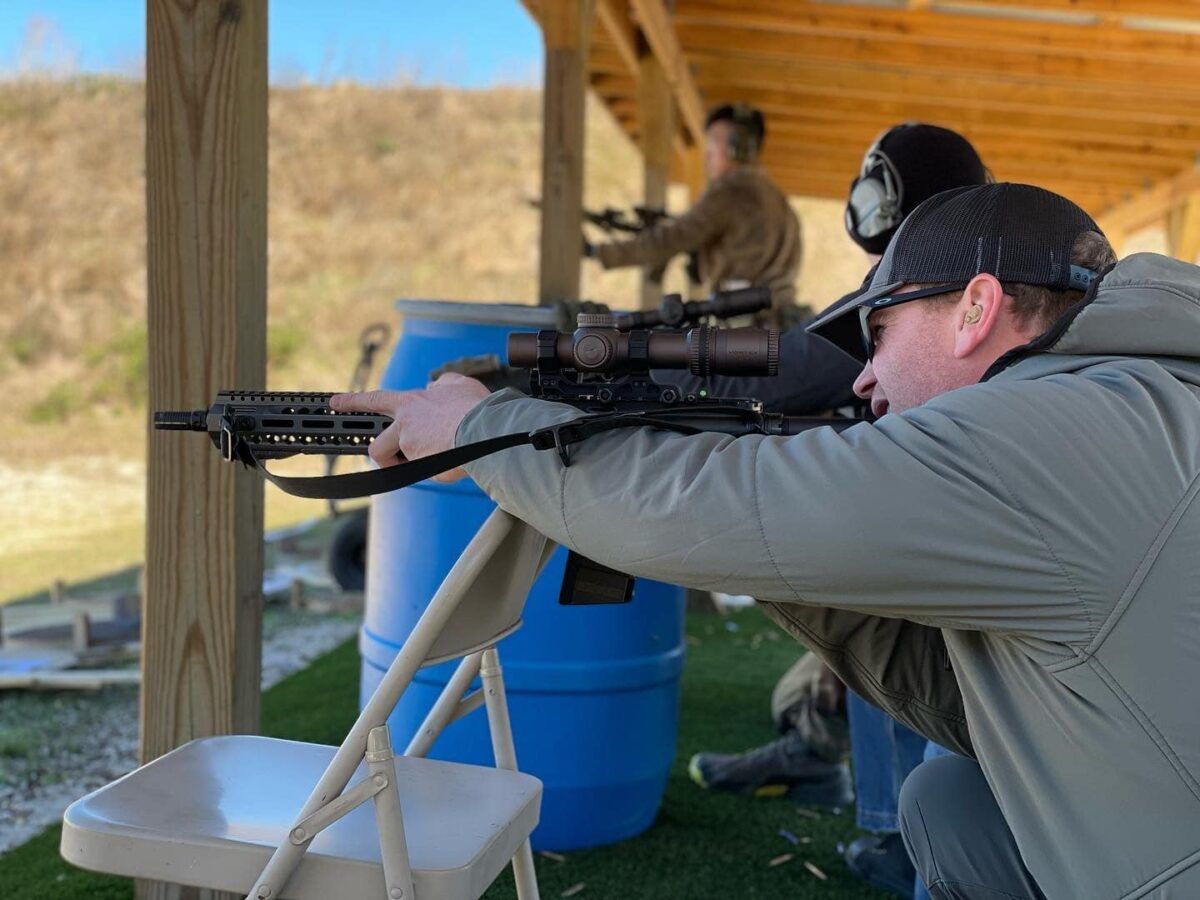
You need to learn how to find stability – anywhere, as you don’t always get to pick a nice, solid barricade all of the time. What about shooting without a barricade? How accurate can I be doing that, and how far? I think once guys figure out what it takes to do that kind of stuff, their capability dramatically increases with that tool in their hand. We’re talking about hitting 300-yard targets being hit standing, and being completely unsupported. It’s not that difficult once you know what you’re doing, but to say that to someone who knows no better, it almost seems impossible.
The other side of it is it is creating a course where just because we have a 1x on the gun, it’s primarily geared towards the LPVO user. I think that, for the most part, the lower the magnification range, the more people open up the acceptable accuracy envelope. I’m kind of backwards on that. I don’t think you get a free pass just because you’ve chosen only 6x or only a 3x magnifier. I still think you need to be held to a pretty high accuracy standard, and that’s what we’ll do in this course…I think I can get some good dudes with good rifles shooting very well fairly easily just by teaching them a few things about movement, stability, and some general math on where the bullet is in flight. With Out Yonder, I made a course that I would have wanted earlier in my shooting career, I’ve got four or five scheduled for 2022, and we’re getting great feedback on it so far.
###



